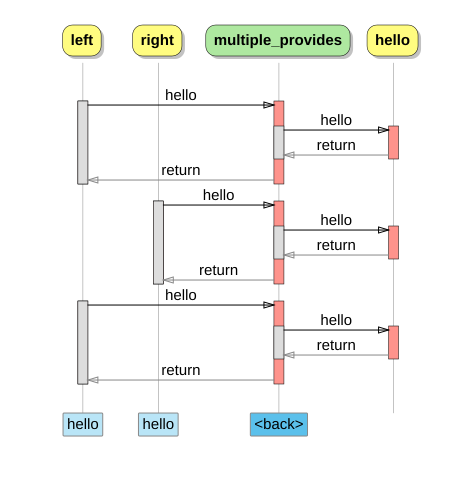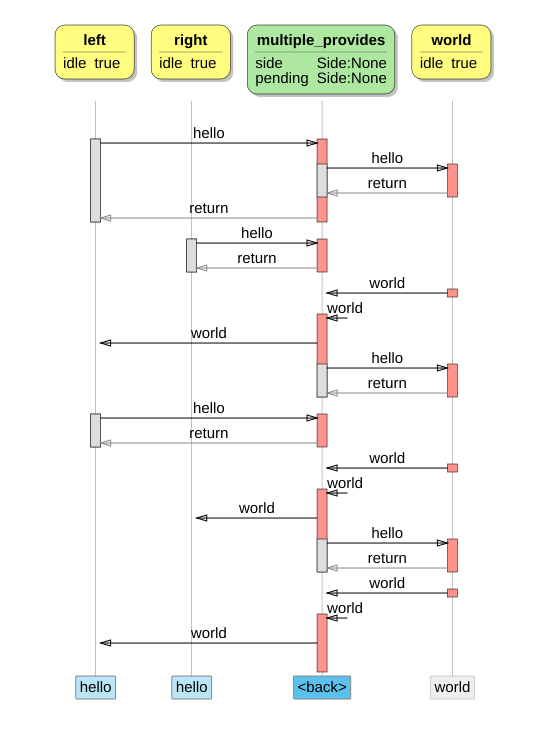Next: Blocking multiple provides, Previous: Indirect blocking multiple external out events, Up: Execution Semantics [Contents][Index]
5.10 Multiple provides
For the remainder of this chapter in our explanations we will be using the following two interfaces:
-
ihellointerface ihello { in void hello(); behavior { on hello: {} } } -
iworldinterface iworld { in void hello(); out void world(); behavior { bool idle = true; [idle] on hello: idle = false; [!idle] on inevitable: {idle = true; world;} } }
So far we have seen examples with more than one requires port. This topology leads to a tree like hierarchy which is a common structure to organize or coordinate in a top down fashion. In the case of sharing a single resource between multiple parties we need the opposite. The example below demonstrates to use of two provides ports.
import ihello.dzn;
component multiple_provides
{
provides ihello left;
provides ihello right;
requires ihello hello;
behavior
{
on left.hello(): hello.hello();
on right.hello(): hello.hello();
}
}
This component simply multiplexes the hello events from its
provides ports to its requires port, resulting in the
following event sequence trace:

If we replace the ihello interface in our previous example with
the iworld interface and correct for the behavioral changes, we
get the following component:
import iworld.dzn;
component async_multiple_provides
{
provides iworld left;
provides iworld right;
requires iworld world;
behavior
{
enum Side {None, Left, Right};
Side side = Side.None;
Side pending = Side.None;
[side.None]
{
on left.hello(): {side = Side.Left; world.hello();}
on right.hello(): {side = Side.Right; world.hello();}
}
[side.Left]
{
[pending.None]
{
on right.hello(): pending = Side.Right;
on world.world(): {side = Side.None; left.world();}
}
[pending.Right] on world.world():
{
side = pending; pending = Side.None;
left.world(); world.hello();
}
}
[side.Right]
{
[pending.None]
{
on left.hello(): pending = Side.Left;
on world.world(): {side = Side.None; right.world();}
}
[pending.Left] on world.world():
{
side = pending; pending = Side.None;
right.world(); world.hello();
}
}
}
}
As we can see from the behavior and the event sequence trace below, asynchonous behavior leads to event interleaving, which requires state to manage the behavior.
